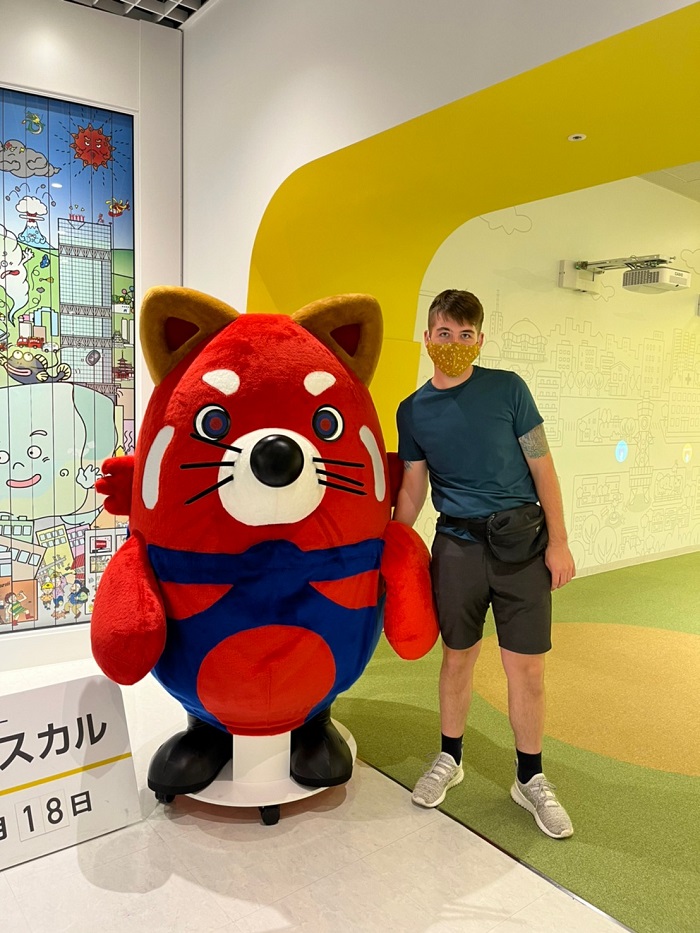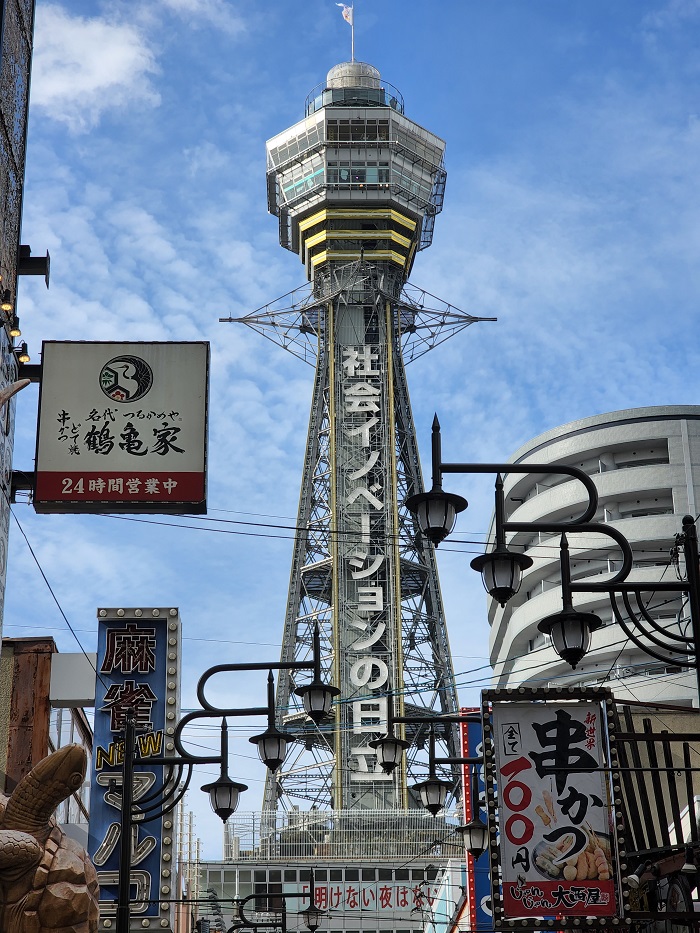Written by Cody Simpson, (University of Kansas), Student Correspondent for CET Japan, Summer 2022

My CET classmates and I together at Shinsekai.
Before coming to Japan I knew that the country was prone to frequent earthquakes and the occasional tsunami. However, I did not think that after arriving in Japan we would have a school outing to visit a disaster center. You may be wondering what a disaster center is and I certainly was to. To start from the beginning I received a message saying we were required to go to the Abeno Life Safety Learning Center. My roommates and I met the rest of the students at our local train station and then set out on our adventure. We rode the train for about 30 minutes and then had to transfer trains, this is always fun in Japan because it can be quite overwhelming to see an onslaught of signs written in a foreign language. The saving grace is that Osaka, the city where I am staying, had a good tourist population (pre-covid), so all the signs had English written on them as well. This and the fact that our Japanese language partners as well as the Associate-Director were there to help us out made the trip manageable. After arriving at the Abeno station, we walked for about 10 minutes and arrived at the disaster center.

A “Kushikatsu” restraunt at Shinsekai. Kushikatsu is simply fried, veggies, fish, meat, etc., on a stick.
What surprised me about the center was that it was on the fourth floor. This is a common sight in Japan. Since there is so little space, commercial buildings can be over eight stories high with different departments on each floor. What was weird about the disaster center was that for being on the fourth floor it had a variety of sophisticated stages and simulations. For example, the first room we entered was a theater that displayed what was at first a somewhat cheesy film about what happens when an earthquake occurs. The film followed a family of 4, the father was at work, the mother at home with her daughter, and the youngest son was at daycare. After being scolded for not doing her homework the sister is asked to get milk for her younger brother.

Me standing next to the disaster center mascot.
During this time an earthquake occurs. If an earthquake occurs in Japan you will receive a phone notification 3 seconds before it happens. Once you receive this message the first thing you need to do is make sure you are in a spot where falling debris, such as books, tableware, or glass can not hurt you. You are also supposed to keep your hands over your head at all times.

Tsutentaku a 100-year-old tower built in Shinsekai.
The video showed what it is like during and after an earthquake. After the earthquake the mother quickly goes and pick up her son from daycare. Meanwhile, the father is stuck in an elevator at work. The daughter realizes that she needs to meet up with her mother, she eventually finds her only to see a sign fall on her and her little brother. This was not the ending I was expecting in the least, but I think it did a good job of showing the real dangers and tragedies that an earthquake can cause.

The ruined town where we got to experience how high a tsunami could get.
After this video, we were led into another room where we were shown how to shut off the gas to appliances or breakers if an earthquake occurred. Subsequently we went into another room where we got to practice using semi-real fire extinguishers. The extinguishers were real but we blew out a virtual gas fire on a stove top. The final two rooms were the most interesting. The first was a mock stage of a town in rubble. In this room the students climbed up a few flights of stairs and saw a virtual tsunami raise up to just right below us. This again highlighted the real dangers that can take place in Japan.

My classmates standing on the earthquake simulator.
In the final room I got to pleasantly watch as my classmates stood on a metal stage that shook them as if they were experiencing a real earthquake. The first time was for less than 10 seconds and the next for over 10. The overall experience was a bit solemn, after realizing the real dangers of an earthquake, but I am glad I got to have this experience. It is just another thing I would have missed out on if I had not decided to study abroad. Luckily, after this experience we visited a nearby tourist spot that was bustling with shops and people.

My roommates and I together at Shinsekai a popular business park.